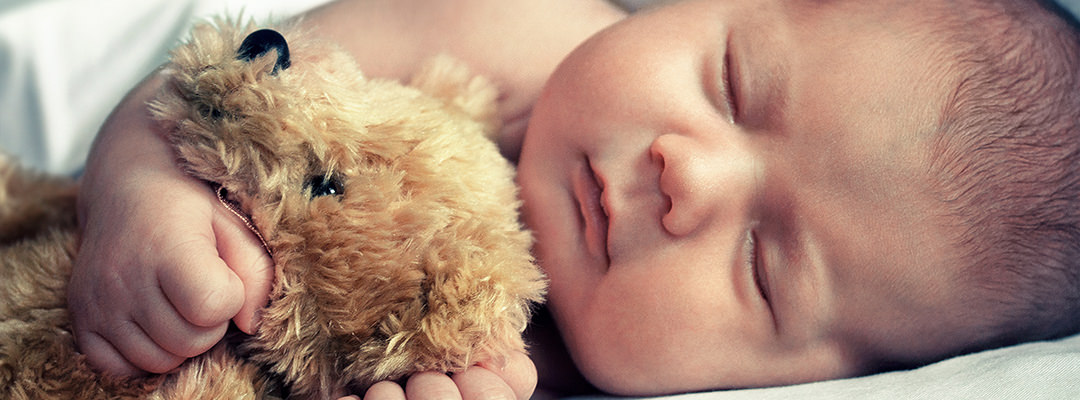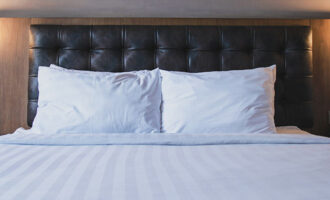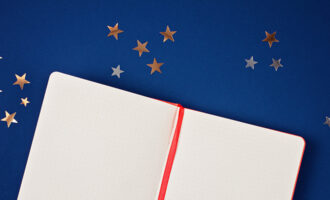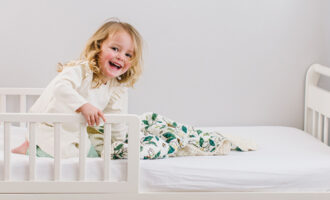Every parent has found themselves wishing there was an easy answer to a tired, crying baby. Trying to get your little one to bed can be even more exhausting for you than it is for them! It’s especially tough on families who live in areas with a lot of outside sounds, noisy neighbours, or a partner that works at home late into the evening.
There’s never going to be a flawlessly perfect bedtime environment, but you can make things easier on yourself and your baby by using white noise. Not all white noise is equal though, or has the same effect; let’s look at what white noise is and what to be aware of when using it to help your child settle down for the night.
What is white noise?
Noise is a lot like colour; the colour white is made up of all the spectral hues brought together in a clean, blank canvas. White noise is the same — a range of sound frequencies brought together to create a neutral hum that’s easy for the brain to relax to. In recent years it has received a lot of attention as a way to deal with stress, insomnia, and anxiety. Now parents are looking at it as a way to create a safe sleeping space for their babes.
Is white noise safe for babies?
It’s no secret that a baby’s malleable, developing brain is a very different creature than our world-weary ones. So does white noise affect their health in the same way?
We’ve actually been using white noise to help babies sleep for a long time without knowing it; a mother whispering and shh-ing their child is an instinctual way to create a calming neutral sound. There are a few things to be mindful of, however, while your baby’s still growing and making sense of the world around them. Let’s look at some of the benefits and precautions of using white noise for your child.
Benefits of white noise
Here are some of the great things about using white noise to help your baby sleep:
It imitates the ambient sound of being in the womb
When babies are forming in their mother’s tummy there’s actually a lot happening around them. Babies get used to hearing the gurgling and sloshing and movement of travelling inside their mother’s bodies. Using white noise helps calm them by recreating some of this ambient noise.
It helps them get to sleep faster
The biggest benefit of using white noise around your child is that it helps them get to sleep faster. Studies have shown that using white noise can help up to 80% of newborns fall asleep within five minutes, which is essential for your baby’s health. White noise instigates a calming reflex in your child, especially as they grow to associate the ambient sound with a peaceful bedtime.
It blocks out external noises
This is super important if you have noisy neighbours or older children who go to bed later than your newborn. Using white noise keeps out the sounds of television, traffic, and voices that might keep your baby from getting a good night’s sleep. White noise creates a neutral sound environment for your child.
Precautions of white noise
Here are some potential pitfalls to be careful of when using white noise around your baby.
It can cause them to become too dependant
If your baby becomes reliant on white noise, it can be difficult for them to adjust to a sleep environment without one. If you go on holiday, or leave your child with a relative, or if they need to have a nap in their daycare, they might have a tougher time falling asleep without the aid of white noise. For this reason it’s best to begin tapering off their dependence as they get older and only use it when they’re having particular difficulty falling asleep.
They may not enjoy it
Just like grownups, all babies are unique individuals and what works for one might not work for another. You should absolutely try using white noise to help your child sleep, but also be very sensitive to how they respond. Try using different types of white noise — we’ll look at those below — and see which one they feel most comfortable with.
Loud noises can contribute to hearing loss
One major mistake a lot of parents make when using white noise for their children is having it on too loud. It’s easy to forget that they can’t always handle the noise volume that we can, and some universal white noise machines are too loud for a baby’s new ears. Remember that when playing any kind of noise around your newborn, you should never go above a maximum of fifty decibels. Some white noise machines are specifically made for use with babies and regulate their sound for the safest, most comfortable use.
Devices can become a hazard
Remember not to leave devices or electrical cords near where your baby can reach them. Don’t leave your white noise machine in your baby’s crib or nearby; make sure to have them safely up high where they can’t reach, with no loose or dangling parts. Always keep your baby’s sleep space free of things that they might use to hurt themselves.
It can make it harder to hear them
If you leave a white noise device with your child and then leave the room, remember that it will also be harder for you to hear them if they cry out for your attention. White noise is specially intended to block the passage of external sounds, and that works in both directions. If you’re using a white noise source to help your child sleep, make sure you stay with them or check in frequently until they’re sound asleep, and then turn the device off for the night.
What kind of white noise is best for babies?
There are a lot of great options if you want to explore using white noise for your child. You can get devices and apps with specific sound settings to create neutral sleep surroundings that are just right for your baby’s ears. You can also use appliances like fans, vacuums, or hairdryers — but keep these outside the baby’s room and filter the sound through a hall or doorway, otherwise they can be too loud. Having a dishwasher or laundry machine running can also help.
Soft natural sounds like the rain, the sea, or the wind can also help soothe your baby into sleep. If you have the option to use the real deal that’s great, but there are tons of apps and sound clips easily available online that aren’t at the mercy of Mother Nature. Just make sure to keep your device out of baby’s reach, and keep it at a soft volume — about as low as a soft shower.
Use white noise for an easier night — for you and your child
White noise isn’t a new thing, but science is starting to understand what mothers have instinctually known for generations: soft, soothing, neutral sounds are great for lulling your baby to sleep. Now there’s a ton of options available for every budget, lifestyle, and unique individual. It’ll give your child a calm, peaceful rest at night, which will help you rest a little easier too.
Did you like it?4.3/5 (26)





